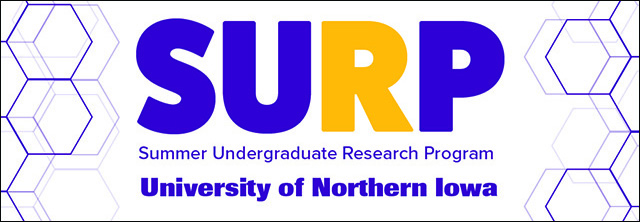
2022 Summer Undergraduate Research Program (SURP) Symposium
Location
ScholarSpace, Rod Library, University of Northern Iowa
Presentation Type
Open Access Poster Presentation
Document Type
poster
Keywords
Water quality--Measurement;
Abstract
With many parameters by which water can be measured, it can be difficult to understand whether water is high quality or low quality. To solve this problem, many water quality indices have been developed over the last 60 years. The UNI Hydrology Lab uses the National Sanitation Foundation Water Quality Index (NSFWQI). This index provides a methodology by which Dissolved Oxygen, Fecal Coliform, pH, Biochemical Oxygen Demand, Temperature Change, Total Phosphate, Nitrate, Turbidity, and Total Solids can be combined to provide a single number indicative of the overall water quality. In previous years, when WQI calculations were needed, the bulk of the work was done either by hand, aligning rulers on printed NSF graphs or one at a time with online calculators. This process is extremely time and labor intensive. This project sought to make a high-volume calculator with which thousands of data could be calculated in a matter of minutes.
Start Date
29-7-2022 11:00 AM
End Date
29-7-2022 1:30 PM
Event Host
Summer Undergraduate Research Program, University of Northern Iowa
Faculty Advisor
Mohammad Iqbal
Department
Department of Earth and Environmental Sciences
Copyright
©2022 Rowan McCarthy and Dr. Mohammad Iqbal
File Format
application/pdf
Recommended Citation
McCarthy, Rowan and Iqbal, Mohammad Ph.D., "Development of a Water Quality Index Calculation Tool using Excel" (2022). Summer Undergraduate Research Program (SURP) Symposium. 26.
https://scholarworks.uni.edu/surp/2022/all/26
Development of a Water Quality Index Calculation Tool using Excel
ScholarSpace, Rod Library, University of Northern Iowa
With many parameters by which water can be measured, it can be difficult to understand whether water is high quality or low quality. To solve this problem, many water quality indices have been developed over the last 60 years. The UNI Hydrology Lab uses the National Sanitation Foundation Water Quality Index (NSFWQI). This index provides a methodology by which Dissolved Oxygen, Fecal Coliform, pH, Biochemical Oxygen Demand, Temperature Change, Total Phosphate, Nitrate, Turbidity, and Total Solids can be combined to provide a single number indicative of the overall water quality. In previous years, when WQI calculations were needed, the bulk of the work was done either by hand, aligning rulers on printed NSF graphs or one at a time with online calculators. This process is extremely time and labor intensive. This project sought to make a high-volume calculator with which thousands of data could be calculated in a matter of minutes.


